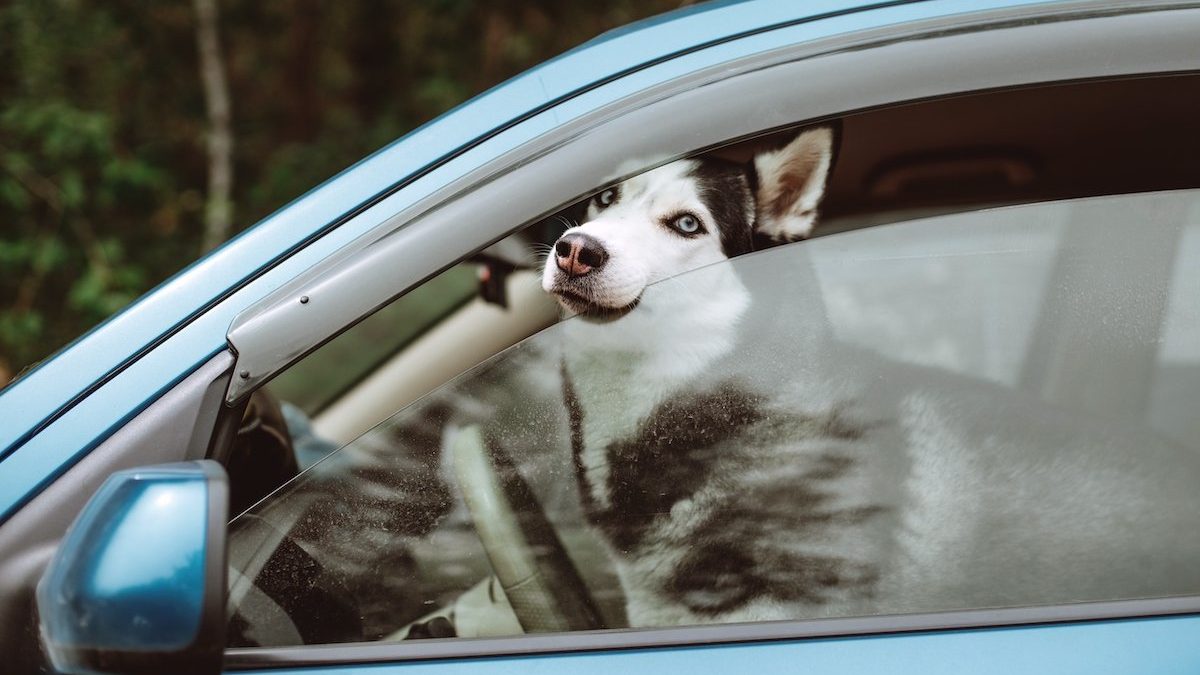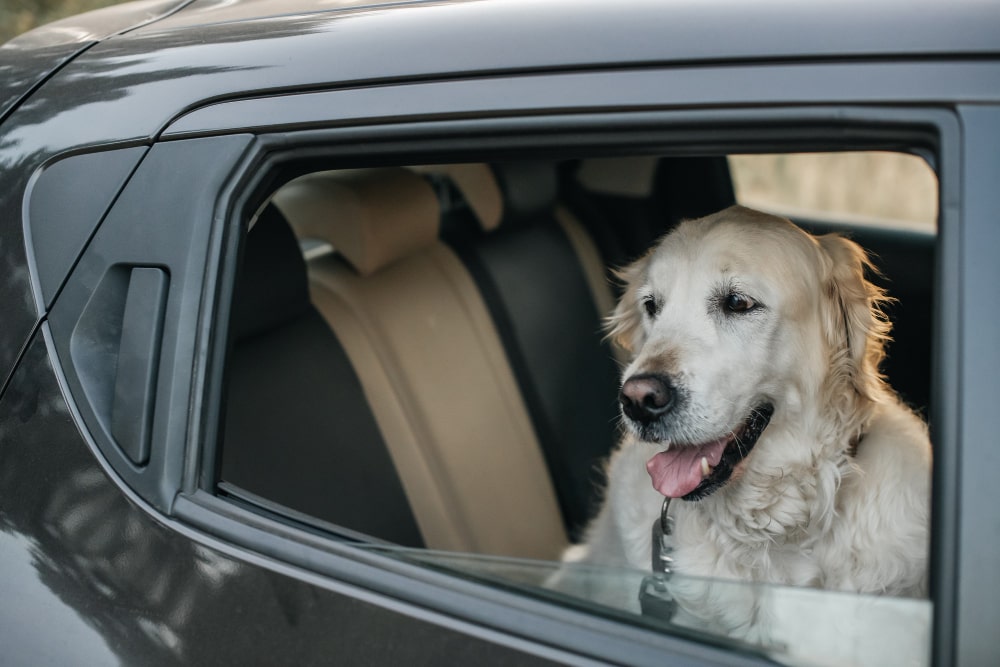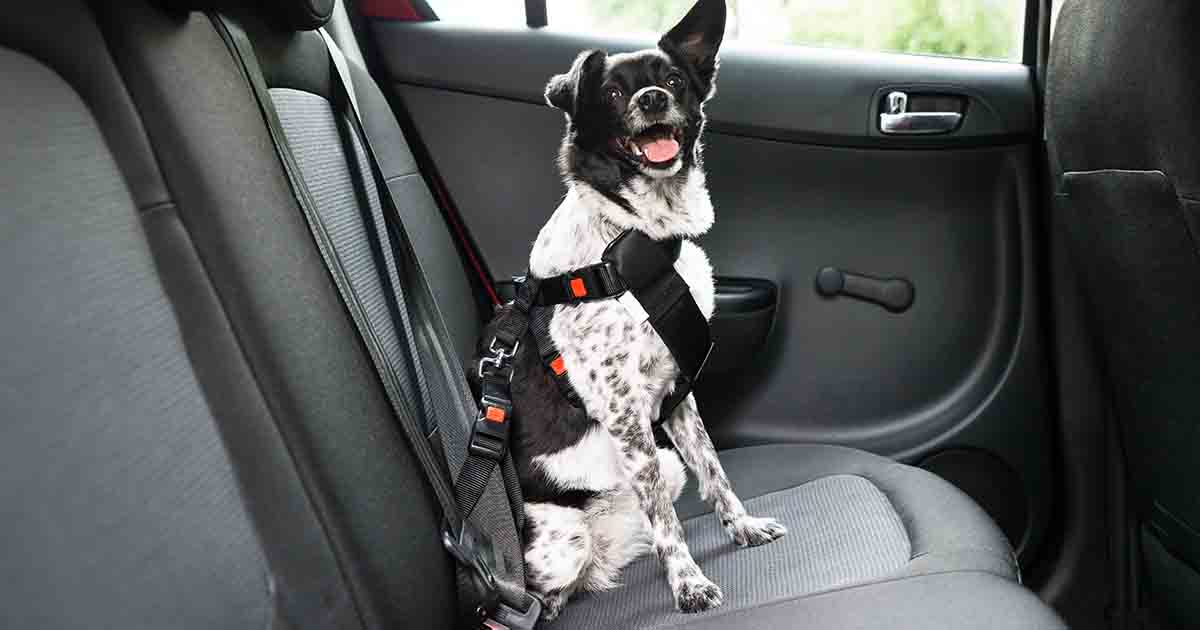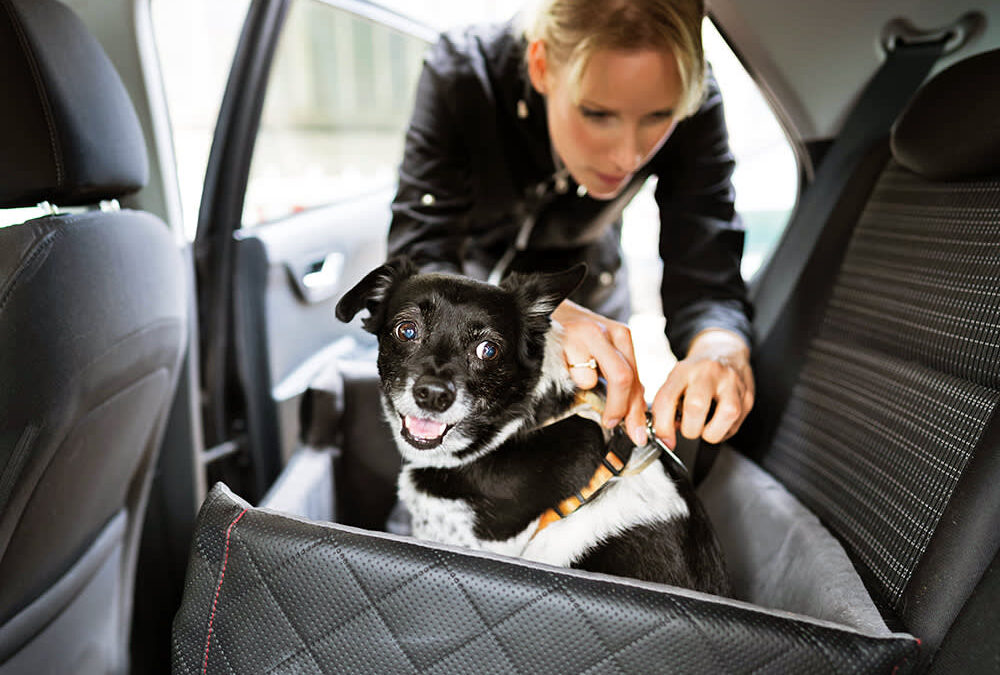Every time I run errands with my dog I face the same dilemma—can I leave my dog in the car just for a few minutes? It seems harmless if the weather feels mild or if I’ll only be gone for a moment. Still I can’t help but wonder if it’s really safe or even legal.
I know I’m not alone in worrying about my pet’s safety and well-being. With so much conflicting advice out there it’s tough to know what’s best. Let’s take a closer look at what really happens when dogs are left in cars and what I should consider before making that decision.
Understanding the Risks of Leaving Dogs in Cars

Understanding-the-Risks-of-Leaving-Dogs-in-Cars
Risks from leaving dogs in cars appear quickly and escalate fast, regardless of the weather. I monitor these risks closely because my dog’s safety depends on small changes in the environment.
The Dangers of Heatstroke and Hypothermia
Heatstroke results from a dog’s body temperature rising above 104°F, even with outside temperatures as low as 70°F (ASPCA). Symptoms include excessive panting, vomiting, confusion, collapse, or even seizures. Hypothermia starts below 99°F. Cold weather and wet fur increase risk—shivering, lethargy, and stiff muscles are early signs. Vulnerable breeds include pugs, bulldogs, boxers (heatstroke examples), and chihuahuas, greyhounds (hypothermia examples).
Key Temperature Thresholds for Dogs
| Body Temperature (°F) | Condition | Symptoms |
|---|---|---|
| 99 or below | Hypothermia | Shivering, slowed heart rate |
| 100–102.5 | Normal range | Alert, regular breathing |
| 104 or above | Heatstroke | Heavy panting, disorientation |
| 107 or above | Fatal risk | Organ failure, seizures, collapse |
How Quickly Car Temperatures Can Change
Car interiors heat up or cool down much faster than I expect, according to the American Veterinary Medical Association (AVMA). A car parked in the sun at 70°F outside reaches 104°F inside in 30 minutes, even with windows cracked. In winter, cars act like refrigerators, intensifying cold. Puppies, seniors, and sick dogs risk critical temperature swings within just minutes if left unattended by me.
Average Air Temperature Rise in Parked Car
| Outside Temp (°F) | Car Temp After 10 min | Car Temp After 30 min |
|---|---|---|
| 70 | 89 | 104 |
| 80 | 99 | 114 |
| 90 | 109 | 124 |
Legal Implications of Leaving Dogs in Cars

Legal-Implications-of-Leaving-Dogs-in-Cars
Leaving my dog unattended in a car creates direct legal risks, with consequences depending on local laws. Authorities in many areas apply strict penalties when animals face harm or distress in parked vehicles.
State and Local Laws
Many states, including California, Florida, and New York, prohibit leaving dogs in unattended vehicles under dangerous conditions. These laws address heat, cold, lack of ventilation, and absence of water or food. Penalties apply even if my dog isn’t visibly suffering when authorities find them.
Some states grant civil immunity to people, such as a Good Samaritan who enters a car to rescue an animal in distress. Others restrict intervention to law enforcement or animal control. Statutes focus on conditions like extreme weather and the duration my dog is left alone.
| State | Prohibits Leaving Dog in Hot Car | Good Samaritan Immunity | Only Law Enforcement May Intervene |
|---|---|---|---|
| California | Yes | Yes | No |
| Florida | Yes | Yes | No |
| Pennsylvania | Yes | No | Yes |
| Illinois | Yes | Yes | No |
| New York | Yes | Yes | No |
| New Hampshire | Yes | Yes | No |
Possible Penalties and Enforcement
Fines, jail time, and felony charges represent possible penalties for leaving dogs in cars, especially if harm occurs. In California, I could face a $500 fine and up to 6 months in jail for misdemeanors if my dog suffers injury. Felony convictions may lead to $20,000 fines and three years in prison for severe abuse.
Enforcement actions depend on factors such as weather, my dog’s health, length of time left alone, and harm caused. In states like New Hampshire, felony charges apply for repeat offenders. If my dog remains unharmed, penalties may be limited to a small fine, but consequences increase rapidly with clear evidence of distress or injury.
| Offense Condition | Fine Amount | Jail/Prison Time | Felony/Misdemeanor |
|---|---|---|---|
| Dog left unharmed in risky conditions | $100 – $500 | None | Infraction/Misdemeanor |
| Dog suffers injury | Up to $500 | Up to 6 months | Misdemeanor |
| Dog suffers death/serious abuse | Up to $20,000 | Up to 3 years | Felony |
| Repeat offense (e.g., NH) | $1,000+ | 1+ years | Felony |
Statutes, penalties, and enforcement details vary, but legal trends in the US consistently discourage leaving dogs in vehicles under any potentially harmful conditions.
Common Misconceptions About Leaving Dogs in Cars
Many dog owners underestimate how quickly conditions inside a car can turn dangerous. I often hear advice about cracked windows or brief stops, but most of these tips aren’t based on facts or expert guidance.
Cracked Windows and Parking in the Shade
Cracked windows and shade provide little protection from extreme temperatures inside a parked car. Results from animal safety research show that, even with windows slightly open, the temperature can rise about 20°F within just 10 minutes. Shade doesn’t slow the heat buildup enough to keep dogs safe.
| Condition | Interior Temp Rise (10 mins) | Effectiveness for Safety |
|---|---|---|
| Windows cracked | +20°F | Negligible |
| Parked in shade | +20°F or greater | Insufficient |
| Both combined | +20°F or greater | Not protective |
Cracked windows and shade were previously believed to help, but data from the American Veterinary Medical Association and ASPCA confirm that neither strategy reduces heat enough to protect dogs from heatstroke.
Short Errands Aren’t Always Safe
Short errands can still expose dogs to life-threatening temperatures. I find that many people assume a “quick trip” only takes a few minutes, yet actual car temperature surveys report a 20°F increase in less than 10 minutes. This rise renders the car unsafe for dogs almost immediately, even on mild days. Experts cite cases of heatstroke deaths in parked vehicles when outside temperatures were as low as 70°F.
| Outside Temp | Time Elapsed | Interior Temp | Risk Level |
|---|---|---|---|
| 70°F | 10 minutes | 89°F | Dangerous |
| 70°F | 30 minutes | 104°F | Life-threatening |
| 60°F | 60 minutes | 112°F | Extreme |
Even a five-minute absence places dogs at risk. Behavior assumptions—like dogs being comfortable with what humans tolerate—ignore their heightened sensitivity to heat and lack of effective cooling (dogs mainly pant, which is less efficient than sweating).
Experts from the ASPCA and Humane Society recommend not leaving dogs in cars unattended, as time estimates for “safe durations” are unreliable and hazardous.
Safe Alternatives to Leaving Your Dog in the Car

Safe-Alternatives-to-Leaving-Your-Dog-in-the-Car
Choosing safe alternatives helps me protect my dog from dangerous temperature fluctuations and potential legal issues. I use these options to avoid leaving my dog unattended in my car.
- Bringing My Dog With Me
I take my dog inside stores and businesses that allow pets. Pet-friendly chains, such as Petco and Home Depot, often let dogs accompany me.
- Using Pet-Friendly Services
I look for grooming salons, banking branches, or restaurants with outdoor seating that accept dogs. These businesses provide dog-welcoming spaces so my dog isn’t left alone in my vehicle.
- Having a Passenger Stay With My Dog
I ask a friend or family member to sit with my dog inside the car with the air conditioning running. My dog stays monitored at a safe temperature during my quick errands.
- Scheduling Activities Away From Errand Times
I plan my dog’s walks or park visits at times unrelated to errands, so waiting in the car never becomes necessary.
- Utilizing Dog Daycare or Pet Sitters
I book professional dog daycare or hire pet sitters for appointments when my destination doesn’t allow dogs.
Pet-Friendly Alternatives Overview
| Alternative | Dog Unattended | Dog’s Safety | Examples |
|---|---|---|---|
| Take dog inside pet-friendly places | No | High | Petco, Home Depot |
| Use businesses allowing dogs | No | High | Groomer, patio cafes, some banks |
| Passenger stays with AC on | No | High (with supervision) | Companion sits in car, AC running |
| Schedule walks at separate times | No | High | Dog walk before/after errands |
| Professional daycare or pet sitter | No | High | Dog daycare facility, local pet sitter |
Data from the American Veterinary Medical Association and ASPCA shows that my alternatives consistently keep my dog safe without risking heatstroke, stress, or legal trouble. I check for up-to-date local rules and business policies before making plans.
Tips for Responsible Pet Ownership
Taking precautions minimizes health and legal risks for my dog. Following best practices keeps my pet safe and secure.
Safe Temperature Guidelines for Dogs in Cars
| Outside Temperature (°F) | Car Interior After 10 Min (°F) | Car Interior After 30 Min (°F) |
|---|---|---|
| 60 | 79 | 94 |
| 70 | 89 | 104 |
| 75 | 94 | 109 |
| 85 | 104 | 119 |
Source: American Veterinary Medical Association (AVMA)[1][5]
Best Practices When Out With My Dog
- Monitor weather conditions before deciding to bring my dog.
- Limit time alone in a car to under five minutes, when absolutely necessary and temperatures allow (32–70°F).
- Park in shaded areas if I’ve no other option.
- Crack windows, though evidence shows this does not fully prevent heat buildup[3].
- Stay within sight and never lose track of time.
- Bring water for my dog during outings.
Recognizing Signs of Distress
| Sign | Common Contexts |
|---|---|
| Heavy panting | High heat, stress |
| Excessive drooling | Rising car temperatures |
| Whining or barking | Anxiety, separation |
| Lethargy | Hypothermia, heatstroke |
| Uncoordinated movements | Both high/low temps |
Legal Considerations
Knowing my state’s laws on unattended pets in vehicles helps me avoid fines or prosecution. Several states allow good Samaritans to take action if a dog is in danger in a car[4]. California, for example, enforces fines up to $500 or jail for animal endangerment.
Alternatives to Leaving My Dog in the Car
- Visit pet-friendly businesses (e.g. Home Depot, PetSmart).
- Use dog daycare or a pet sitter when running errands.
- Schedule pet walks separate from errands to avoid risks.
- Ask a friend or family member to join and remain with my dog.
Following these tips prioritizes my dog’s health while complying with safety standards.
Conclusion
My dog’s safety is always my top priority and I’ve learned that even quick errands can put them at risk if left in the car. When I plan my day I always look for pet-friendly options or arrange for someone to stay with my dog. It’s never worth gambling with their well-being or facing legal trouble over a few minutes of convenience. By making thoughtful choices I can keep my dog safe and enjoy peace of mind every time I leave home together.
Frequently Asked Questions
Is it safe to leave my dog in the car for a few minutes?
No, it’s generally unsafe. Temperatures inside a parked car can rise or fall quickly, even with windows cracked or parked in the shade. Both heatstroke and hypothermia can set in within minutes, putting your dog’s health at serious risk.
How quickly can a car become dangerous for a dog?
A car can become dangerous for a dog in as little as 10–30 minutes. Even moderate temperatures outside can lead to life-threatening conditions inside the vehicle very quickly.
What are the legal risks of leaving my dog in the car?
Many states have strict laws against leaving pets unattended in vehicles under dangerous conditions. Penalties range from fines to jail time, and can escalate if your dog is harmed. Always check your local laws before leaving a dog in a car.
Do cracked windows or parking in the shade make it safe?
No. Studies show that cracked windows or parking in the shade do not prevent rapid temperature rises inside cars. These methods offer little to no protection against heat or cold.
What signs should I look for if my dog is in distress?
Signs of distress in dogs include heavy panting, drooling, restlessness, whining, collapsing, or vomiting. If you notice these, remove your dog from the car immediately and seek veterinary attention.
Are there alternatives to leaving my dog in the car?
Yes. Consider bringing your dog into pet-friendly stores, having a passenger stay with your dog, scheduling errands separately, or using dog daycare or pet sitters while running errands.
What temperature is safe for a dog left in a car?
Ideally, avoid leaving your dog in the car at any temperature. If absolutely necessary, keep it under five minutes and only if outside temperatures are very mild (around 60–65°F). Watch for signs of distress regardless.
Which dogs are most at risk in cars?
Puppies, senior dogs, dogs with health issues, and breeds with short muzzles (like pugs and bulldogs) are most vulnerable to temperature extremes and should never be left alone in cars.
What should I do if I see a dog left in a hot or cold car?
Contact local authorities or animal control immediately. Do not attempt to break into the car unless allowed by law and the dog appears to be in immediate danger. Laws vary by state regarding citizen intervention.
Can I face criminal charges for leaving a dog in a car?
Yes. Depending on your state and the condition of your dog, you could face criminal charges, including fines, jail time, or even felony charges if the dog is harmed. Always follow local laws and err on the side of caution.

